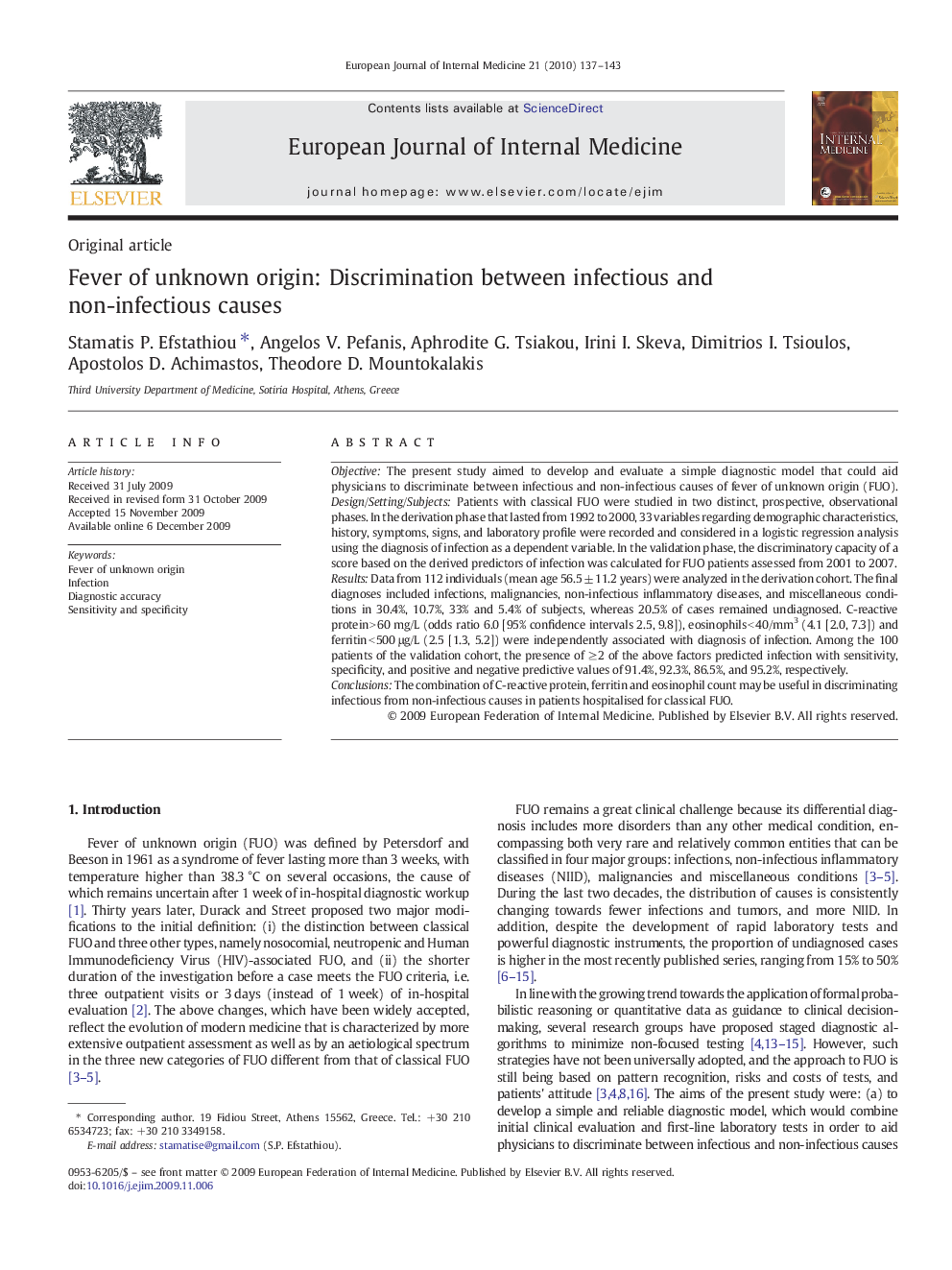| Article ID | Journal | Published Year | Pages | File Type |
|---|---|---|---|---|
| 3467283 | European Journal of Internal Medicine | 2010 | 7 Pages |
ObjectiveThe present study aimed to develop and evaluate a simple diagnostic model that could aid physicians to discriminate between infectious and non-infectious causes of fever of unknown origin (FUO).Design/Setting/SubjectsPatients with classical FUO were studied in two distinct, prospective, observational phases. In the derivation phase that lasted from 1992 to 2000, 33 variables regarding demographic characteristics, history, symptoms, signs, and laboratory profile were recorded and considered in a logistic regression analysis using the diagnosis of infection as a dependent variable. In the validation phase, the discriminatory capacity of a score based on the derived predictors of infection was calculated for FUO patients assessed from 2001 to 2007.ResultsData from 112 individuals (mean age 56.5 ± 11.2 years) were analyzed in the derivation cohort. The final diagnoses included infections, malignancies, non-infectious inflammatory diseases, and miscellaneous conditions in 30.4%, 10.7%, 33% and 5.4% of subjects, whereas 20.5% of cases remained undiagnosed. C-reactive protein > 60 mg/L (odds ratio 6.0 [95% confidence intervals 2.5, 9.8]), eosinophils < 40/mm3 (4.1 [2.0, 7.3]) and ferritin < 500 μg/L (2.5 [1.3, 5.2]) were independently associated with diagnosis of infection. Among the 100 patients of the validation cohort, the presence of ≥ 2 of the above factors predicted infection with sensitivity, specificity, and positive and negative predictive values of 91.4%, 92.3%, 86.5%, and 95.2%, respectively.ConclusionsThe combination of C-reactive protein, ferritin and eosinophil count may be useful in discriminating infectious from non-infectious causes in patients hospitalised for classical FUO.
